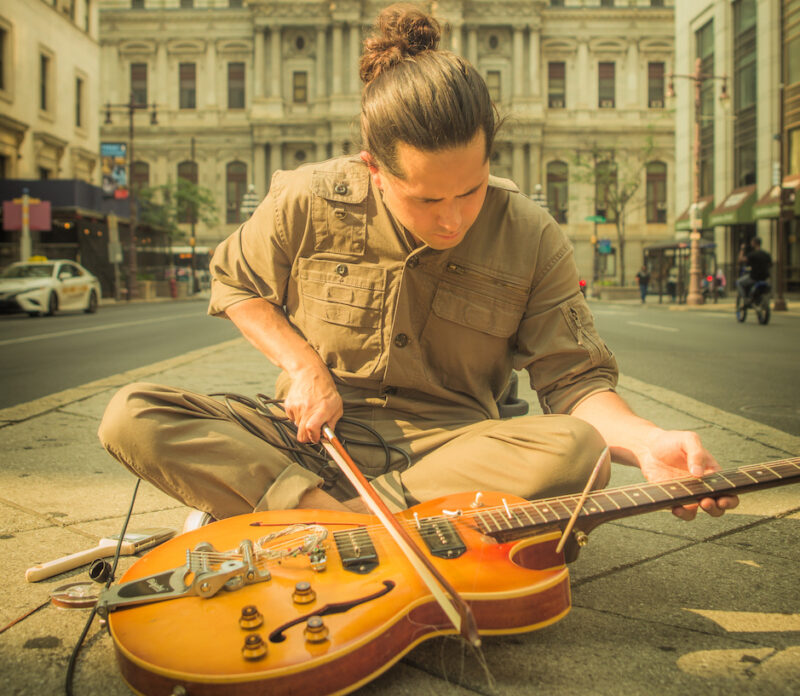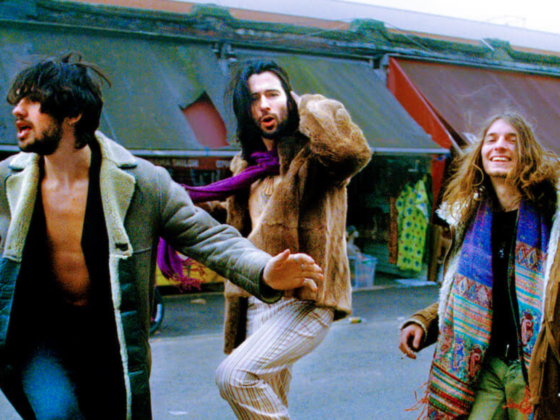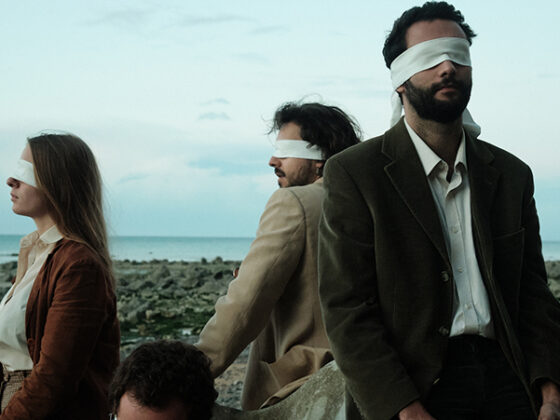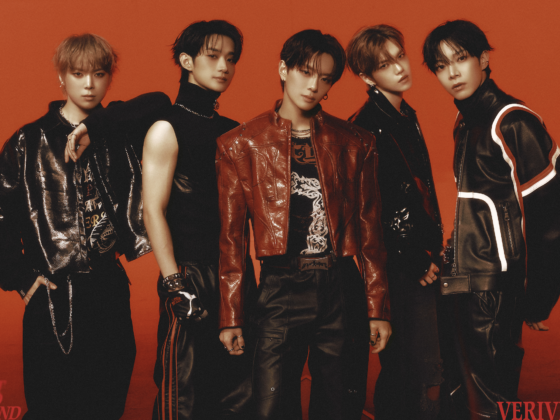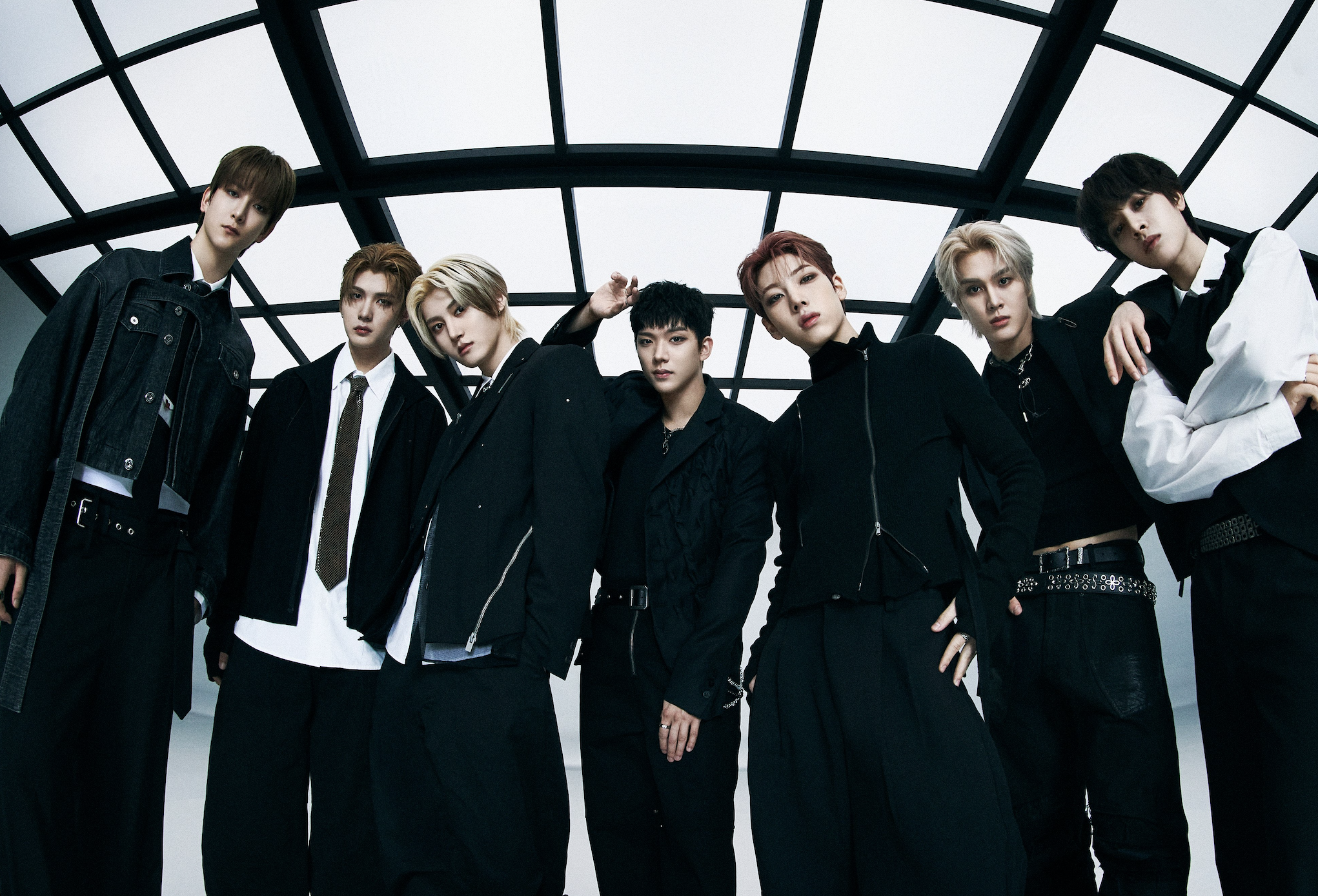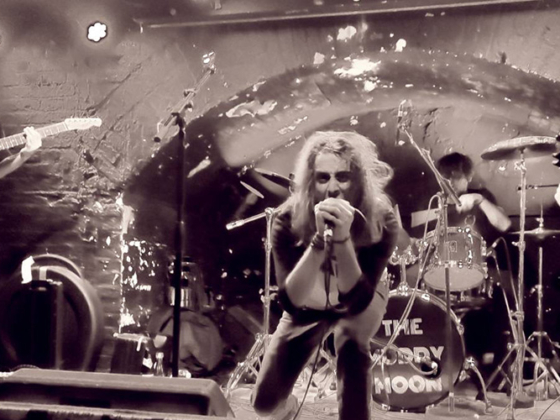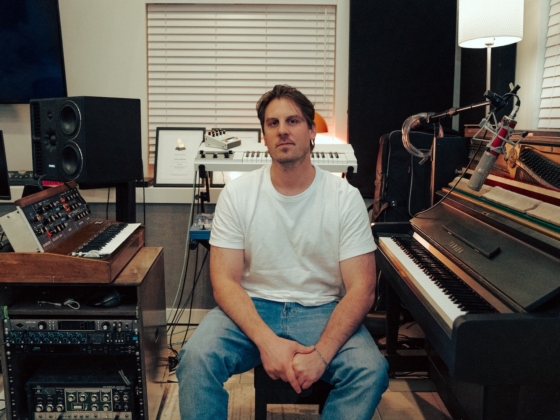Joshua Marquez has just shared a transformative new musical project. Called Recycled Soundscapes, the album was created by Joshua at a recycling facility where he rescued various instruments and objects from the waste stream to record a cinematic musical offering. The result is an expansively layered sonic journey complete with mechanical rhythms, unique percussion, enveloping synths and delightful keys. Broken into two songs, each over 15 minutes, Recycled Soundscapes begins with "The Sorting Line" a moodier and piercingly bold soundtrack. Then there is "The Tipping Floor" which is meditative, contemplative and solace induced. Recycled Soundscapes offers a musical experience rarely heard and a greater contemplation on the perils of society's throw away culture.
We chatted with Joshua all about his new music, challenges of recording tapes and the many unique items he found while sorting through the recycling facility.
Hi Joshua, wow Recycled Soundscapes is such a remarkable album and concept. Can you tell our readers why you embarked on such a unique and impactful recording?
Recycled Soundscapes came about through my artist residency at a place called RAIR (Recycled Artist In Residence) which is located on the site of Revolution Recovery, a waste and recycling processing facility. For this residency, my goal was to compose music using the materials found at the site. So, all the sounds heard on Recycled Soundscapes came from the site itself. All these sounds, ranging from both functional and broken musical instruments to recordings of household or commercial objects, came from items that were destined for the landfill. For the last few years, I’ve been thinking a lot about our personal relationship to waste culture and consumerism – the materiality of art and music making. So, my goal was to rescue material from the waste stream and give it new life. I also took field recordings of everyday sounds in the facility, specifically the sorting line (where materials are sorted) and the tipping floor (where materials are dumped). These two locations were the inspiration behind the two sides of the album and where the track titles came from.
To take that concept a step further, I recorded all the material to magnetic tape, again found at Revolution Recovery, on machines that I also found on site. Once I recorded, harmonized, manipulated, and turned the recorded sounds into melodies, I then took those sound-collaged compositions and played them through a large 40-yard dumpster. I did this by attaching small sound devices to the sides of the dumpster, converting the large metal vessel into a functional speaker. The final mix on the album is a slightly cleaned-up and edited version from that dumpster recording and performance.
You must have found some interesting and crazy items at the large recycled site and waste site. Can you tell us more about what you found and how the items influenced your music?
I spent the better part of a year at the site and was able to find a lot of interesting things. Some of those items were not salvageable but were able to be briefly recorded on-site. There were several very broken pianos that made it onto the album. Many were out of tune or extremely damaged – that just gave them character, though. I was able to salvage a few complete drum kits and even a large 32-inch gong, which I have converted into a speaker and been using a lot, ever since. I can’t even remember the number of amplifiers, guitar pedals, percussion instruments, and other small musical instruments and gadgets that I came across, but my home studio has been greatly expanded, as a result of this project.
My music practice has always been rooted in vintage music gear and discarded instruments. I find a lot of my favorite instruments in thrift stores or on the side of the road. Recently, I picked up a wonderful vintage acoustic guitar at a thrift store for $20 and it sounds better than most guitars I’ve played. We’ve reached a point where we consume so much material that we have an excess and we need to purge that excess, even if it is quality material. I guess people like me benefit from that. I grew up in the antique store that my family owned and that practice, or lifestyle, of finding treasures and giving them new life has just been a part of who I am. The instruments and audio equipment that I use all have a history and a story, even if I don’t know it, that finds its way into my work.
How would you say this album's sonics are different from your past work?
I think my work has been aesthetically consistent, recently. There are some common threads that run through a lot of my work such as microtonal harmonies (which are hopefully approachable and interesting), complex timbres that take up time and allow for investigation, and an exploration of a tone/noise spectrum. Although each project, piece, or album has its own flavor, these elements permeate my work, I hope.
What were the challenges of recording to a magnetic tape and recording in a dumpster?
There were a lot of challenges, but that’s part of the concept. The recordings were imbued with imperfections due to the quality of the “trash tapes” and recording devices that were clearly not calibrated. But that gives these recordings character. The samples were already very saturated with interesting timbres and artefacts that lend themselves to the work.
Recording in a dumpster was a lot of fun, though. It was all set up and taken down in one day, so it was very stressful. I was able to test out the concept, but not to its full extent. So, the day of the recording and performance was a bit of a gamble, and it turned out fine!
Do you plan on touring with these recycled instruments?
I have been using these instruments since I got them and have toured a little bit with them. Some of the guitar pedals have made it on my primary pedalboard and have been in use for well over a year, now. I’m actually have a sound art installation and performance at the Practice Gallery in Philadelphia this September using the gong speaker, some of the drums, tapes, and a large loudspeaker I found at RAIR. That exhibition called Echo Broadcast will be up through September and I’ll be performing some work there, throughout the show. Some upcoming tour dates have some of these instruments in my touring rig, too.
I was taken aback by how cinematic and expansive the sound of Recycled Soundscapes is, was that your intention or did the sound and direction just come about as you were creating the music in the moment?
I think that type of sound world is typically my goal, but I was completely at the mercy of what materials and sounds were around me during my time at RAIR. Some days didn’t yield much in terms of physical materials or recording, but other days were a treasure trove of sound. The sounds that I collected just happened to work well. Most of the recordings were taken without much preparation. Things like recording workers sorting materials or sounds from the actual tipping floor couldn’t be staged. But I was able to meticulously record other sounds, like some of the musical instruments, and those recordings acted as a bridge to connect the more “found sounds”. Recycled Soundscapes took a lot of work, but also has many happy accidents that give it such an expansive sound. I think the natural sound of a dumpster is quite expansive, so maybe that’s why this album has such a large sound.
What do you hope listeners take away from your new album? Is there an underlying message?
I hope that listeners enjoy the music, first and foremost. But I hope the concept about material waste comes through. My goal is for the listener to reevaluate two things: their relationship to waste culture and their relationship to sounds or “noise”. I utilize a lot of noise elements in Recycled Soundscapes and think they turned out to be quite beautiful. There are some moments where lovely chords and melodies come from industrial-sounding scraping of metal or a gong being bowed. Just by harmonizing these sounds transforms them into very musical sounding gestures. These sounds surround us everyday (like our trash and waste) and we don’t pay them much mind. These fleeting sounds of traffic or the sound of a fork scrapping a plate aren’t heard as beautiful, but they can be.
Finally, what's next for Joshua Marquez?
I have a lot of things on the horizon. I have about two years’ worth of music that needs to be released – it just needs to find the right time and place. I mentioned earlier that I have an installation at the Practice Gallery, and I also have a performance of a large-scale piece, called Mycelium, that I’ve been working on for a while. That performance also takes place in September. This year, I’m in the middle of an artist residency at Dirtbaby Farm where I am recording the sounds of plants and crops, which is a lot of fun and yielding interesting sounds! I have a performance of that work coming up later this year, as well, with an album to follow. On top of that I have some tour dates TBA and a couple of albums worth of electric, acoustic, and prepared guitar pieces that I’m really excited about. Those will all be available on Bandcamp (some exclusively on Bandcamp) and some will be streaming on all digital platforms.
Connect with Joshua Marquez: BANDCAMP

